Letters
Reprinted from "Crown Jewels of the Wire", November 1997, page 4
ANSWERS TO QUESTIONS
Helen Wilson asked about an interesting piece of porcelain in the
"Letters to the Editor" last month.
It is a feed through bushing used mostly on cast iron case General Electric
and a few Westinghouse transformers from around 1910 - 1925. They are second
generation, replacing the straight porcelain tube bushings as primary voltages
increased above 5,000 volts. Tar, or most often lead, was poured in to secure
the bushing after it was inserted into the cast iron case. Tar would be poured
between the inside of the bushing and the wire to keep out moisture and dirt and
prevent transformer oil from leaking out.
Tommy Bolack, Farmington, NM
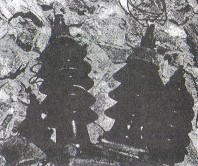
G.E. sulphur bonded multipart
bushings from about 1910.
34,000 volts left
10,000 volts...
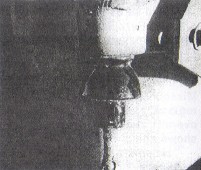
Feed through bushing on
transformer cast iron case.
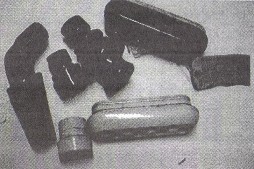
Other feed through bushings. Bushing with the
tag at the top of the photo is
new and
unused from WE&M,1925.
(Westinghouse Electric and Manufacturing Co.)
Bob Gendron wrote about his all porcelain "GEORGE" in last month's
issue. Tommy Bolack sent these illustrative photos.
The street light head is for old Series 6.6 amp circuits. These were high
voltage as open circuit conditions on the Constant Current Transformer supply
these could reach 15,000 volts. The lamp contained a film cutout disc that
would short circuit upon lamp failure. This was placed between the spring
fingers of the upper socket which were pushed between two shorting fingers in
the light fixture.
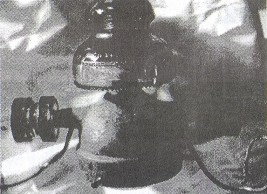
The more uncommon all glass unit with a
Hemingray High Voltage Triple
Petticoat
No.1 and two glass knobs.
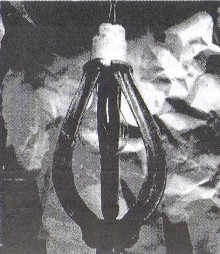
Lamp in ground changer with socket and
cutout disc wedged between top
fingers.
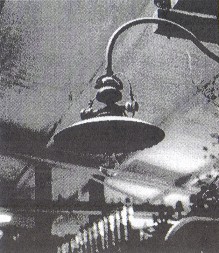
A working, all porcelain series high voltage
head complete with arm,
reflector lamp and
cutout socket in the Bolack Electromechanical
Museum,
Farmington, New Mexico.
| 